#Märchenkönig
Photo


SECRET SANTA 2022
↳ Odette Genshin!AU for @reginalapis / @chaosmagiciangirl💘
ODETTE VON MÄRCHENKÖNIG ✧✧✧✧✧
GEO • CATALYST • OLOR CORONATUS (CROWNED SWAN)
#graphics#odette von märchenkönig#ss2k22#kara#my edits#clara's edits#mine#genshin au#stellaris phantasm#presents#secret santa
18 notes
·
View notes
Text

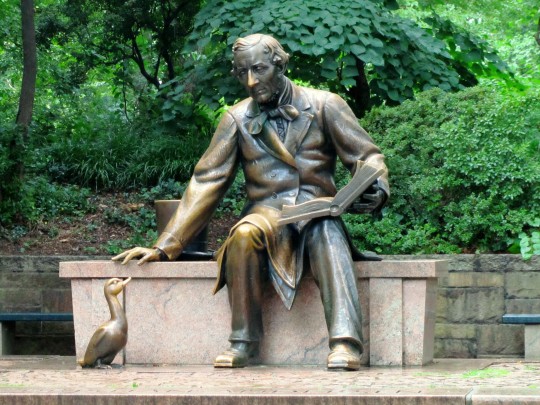

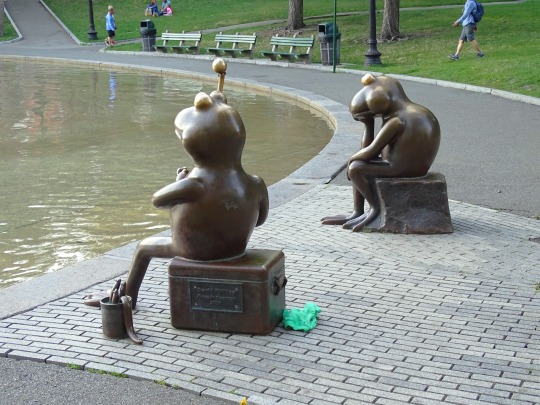



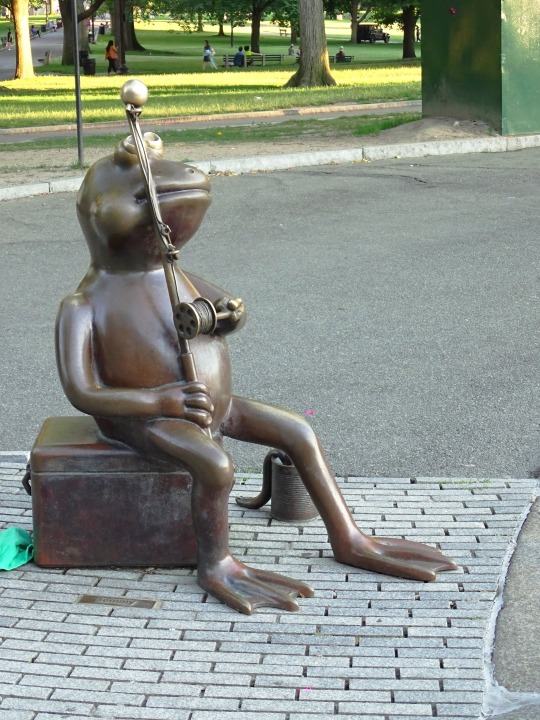






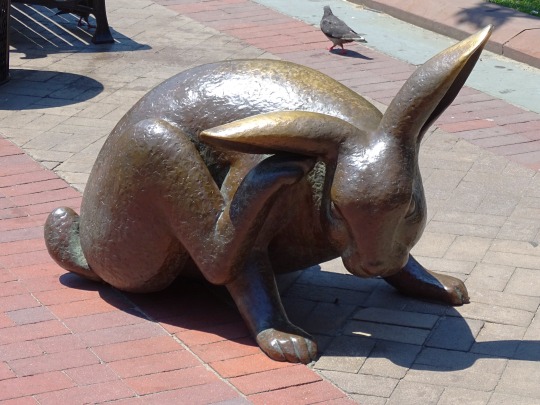
National Tell a Fairy Tale Day
Gather round the fire, and make yourselves comfortable… Tell A Fairy Tale Day is all about exploring myths and stories, old and new. From grim(m) tales to urban legends, tap the dark corners of your subconscious and see what you find…
History of Tell A Fairy Tale Day
The sharing of magical, otherworldly stories is a tale as old as time. While the term ‘fairy tale’ was coined in 1697 by Madame d’Aulnoy (conte de fées in her native French), it’s likely that some fairy tales originated as early as the bronze age over 6,000 years ago. And for most of history, fairy tales have been passed on not in written form but via the oral tradition, with each generation telling and dramatizing stories to the next.
The fairy tale’s ancient roots can be traced all over the world, from Vikram-Betaal in India and Aesop’s Fables in Ancient Greece to Arabian Nights in the Middle East. It was during the late 17th to 19th centuries that fairy tale collectors emerged, most famously Charles Perrault and the Brothers Grimm. While the Brothers Grimm aimed to preserve folktales in their pure form, documenting them in the way they were told by rural peasants unable to read or write, Perrault and others reworked fairy tales for literary and artistic effect, with some writers such as Hans Christian Andersen dreaming up their own new stories.
As the fairy tale’s history emerges into the modern day, it’s clear that the genre is still as popular as ever – look no further than the success of Disney movies to see how these stories continue to capture our hearts and imaginations. In fact, the famous Disney castle is inspired by Neuschwanstein Castle in Germany, built by none other than the Märchenkönig (fairy-tale king), Ludwig II of Bavaria, himself. Perched on a rocky hill and with horse-drawn carriage rides up to the front door, Neuschwanstein and its elaborate interior abound in myths and legends – the castle is even home to an artificial grotto!
By celebrating Tell A Fairy Tale Day, you’ll be continuing the magical tradition that has ensured fairy tales are still very much part of our lives to this day.
How fairy tales change over time
Perhaps one of the most interesting aspects of fairy tales is how they change over time. Simple plot structures, motifs and archetypal characters recurring across many cultures make these stories rife for adaptation and reinterpretation.
Although nowadays we usually associate fairy tales with children’s literature, you may be surprised to learn that many of today’s beloved stories have rather dark and disturbing origins. Imagine a world in which no woodcutter comes to save Little Red Riding Hood from the wolf’s belly, or in which one of the ugly stepsisters cuts off her own toes so that her foot fits in the slipper! From the 18th century onwards, many fairy tales were toned down and reworked so that they were more suitable for children.
These stories and the genre itself have also been adapted and reinvented for different time periods and cultures. Alongside original modern-day fairy tales, there are also various retellings, for example in urban settings or different countries. One particularly common type of retelling comes from women writers. Authors such as Angela Carter and Margaret Atwood have taken what are often seen as outdated tropes about women and reinvented them – the damsel in distress becomes the plucky heroine, and the trapped bride leaves her ogre husband for her happily ever after.
Why fairy tales are important
As it is often claimed Albert Einstein once said, “If you want your children to be intelligent, read them fairy tales. If you want them to be more intelligent, read them more fairy tales.” We might not expect such high praise for fairy tales from a world-famous theoretical physicist, but Einstein recognized the importance of the imagination. Fairy tales are incredibly valuable for both children and adults when it comes to learning about the world in which we live and developing our capacity for creativity. Fairy tales have also been considered fertile ground by psychoanalysts. With their twists and turns, age-old themes and familiar characters, our favorite stories may reveal not only the workings of our personal subconscious but also the fundamental elements of our collective psyche.
How to celebrate Tell A Fairy Tale Day
It should be clear by now that, when it comes to celebrating Tell A Fairy Tale Day, you really can let your imagination run wild! And while it’s a day that kids will love, it’s also a great occasion for adults too.
Gather your friends and family and take it in turns to share your favorite stories with one another. Time to brush up on your acting skills, as the more dramatic enactments the better – whether you’re good at impersonating a wicked witch or excel at acting out the characters’ quest through the enchanted forest, you’ll want to really make the tale come to life for your audience. And why not sit around a bonfire toasting marshmallows or string up some fairy lights in your living room to add to the atmosphere?
Alongside sharing the stories we know and love, fairy tales are the perfect genre for getting creative and honing your writing skills. Take a well-known story and tweak it to fit a different time or setting, or have a crack at inventing your own. It may well start with ‘Once upon a time’, but it’s completely up to you whether there’s a ‘Happily ever after’! Many libraries and literary organizations will also share stories and creative resources and even hold events to help mark the occasion.
If writing’s not your thing, then there are plenty of films and programs based on fairy tales for you to enjoy. Disney’s Snow White and the Seven Dwarves, Cinderella and The Little Mermaid are just some examples of the media giant’s adaptations, while movies and TV series such as Into the Woods and Tell Me a Story interweave and retell various classic fairy tales for new audiences.
And if you feel like going all out, why not host a fairy tale themed party? Encourage your guests to come in fancy dress, put on an enchanted feast of yummy snacks such as gingerbread houses and toadstool cupcakes, and throw some legendary party games like hunt the pea and castle building.
However you choose to celebrate Tell A Fairy Tale Day, it’s sure to be a magical occasion!
Source
#Hans Christian Andersen Statue by Georg John Lober#Central Park#Manhattan#Little Mermaid by Edvard Eriksen#New York City#Copenhagen#København#Denmark#summer 2006#public art#Den lille Havfrue#Tell a Fairy Tale Day#NationalTellAFairyTaleDay#26 February#Alice The Way Out by Liliana Porter#mosaic#MTA New York City Transit#Alice in Wonderland#Boston Common#Frogs at Tadpole Playground by David Phillips#Boston#original photography#travel#vacation#tourist attraction#landmark#USA#Tortoise and Hare by Nancy Schön
5 notes
·
View notes
Text
#ludwig ii#ludwig wittelsbach#ludwig ii of bavaria#sisi#empress elizabeth#visconti#bayern#bavaria#richard wagner#wagner#fairytale#neuschwanstein#herrenchiemsee#linderhof#swan king#moon king#fairytale king#mad king ludwig
6 notes
·
View notes
Text




"Ein ewig Rätsel will ich bleiben mir und anderen.“
Zur Erinnerung an O. W. Fischer (01.04.1915 - 29.01.2004)
Diese ebenso schönen wie kryptischen Worte stammen aus der Feder des bayrischen Märchenkönigs Ludwig II. Aber auch dem österreichischen Schauspielstar und späteren Philosophen Otto Wilhelm Fischer, der seine beiden ihm allzu martialisch dünkenden Vornamen elegant in O. W. abkürzte und für den sein faszinierendes Porträt eben jenes Monarchen 1955 zur Paraderolle seiner Filmkarriere avancieren sollte, würden sie trefflich zu Gesicht stehen.
Nach der Matura und dem Studium einiger Semester Germanistik, Anglistik und Kunstgeschichte nahm O. W. Fischer 1936 Schauspielunterricht am Wiener Max Reinhardt Seminar, dem sich sich eine erfolgversprechende Bühnenkarriere anschloss, während er im damaligen Unterhaltungsfilm in durchweg seichten Rollen als harmlos-attraktiver Liebhabertyp besetzt wurde.
Erst nach dem Zweiten Weltkrieg begann O. W. Fischers Aufstieg zu einem der gefeiertsten Stars des deutschen Films. Sein erster großer Erfolg war 1950 die Darstellung des aufgrund seiner entschieden liberalen Reformbestrebungen ebenso wie durch seine Liebe zu einer Frau aus bürgerlichem Haus als Rebell angesehenen Erzherzogs Johann von Österreich in dem Historienfilm “Erzherzog Johanns große Liebe”.
Nach einigen belanglosen Unterhaltungsfilmen markierte 1952 das Melodrama “Bis wir uns wiederseh’n” den Wendepunkt in der Filmkarriere von O. W. Fischer. Erstmals arbeitete Fischer mit seiner kongenialen Partnerin Maria Schell zusammen. Der Faszination, die von dem nuancenreichen und emotional intensiven Zusammenspiel der Beiden ausging, erlagen Millionen von Zuschauern und erkoren den Österreicher Fischer und die zwar in Wien geborene, jedoch in der Schweiz aufgewachsene Schell zu Deutschlands unangefochtenem Traumpaar - und dies blieben sie in acht gemeinsamen Spiel- und Fernsehfilmen (lediglich in dem französischen Historienepos “Napoleon” aus dem Jahr 1954 haben sie keine gemeinsame Szene) über einen Zeitraum von fünfunddreißig Jahren lang.
Mit der Darstellung des betrügerischen Spielcasinobetreibers Paul Mayhöfer hatte O. W. Fischer sein ideales Rollenfach im Film gefunden: der Homme fatal, der mit faszinierend charismatischer Ausstrahlungskraft und immensem Sex Appeal betört, seinen schier unwiderstehlichen Charme exzellent einzusetzen versteht und sich nahezu allen gängigen gesellschaftlichen Konventionen widersetzt.
Beispiele dieser faszinierenden Darstellungskunst sind der dämonisch-egozentrische Filmregisseur Frank Tornau in “Solange du da bist” (1953), der skrupellose Mitgiftjäger Peter van Booven in “Ein Herz spielt falsch” (1953), den erst die Liebe seiner todkranken Frau zu läutern vermag, der betrügerische “Hellseher” Hanussen in Fischers erster Regiearbeit (1955), der von seinen wissenschaftlichen Forschungen besessene Arzt Dr. Paul Venner in Fischers zweiter Regiearbeit “Ich suche dich” (1956), der sich vor Verletzungen durch Andere schützen will, indem er sich mit Zynismus umgibt und erst durch den Verlust der geliebten Frau die Sinnentleertheit seines bisherigen Lebens erkennt, der Arzt und Reformer Friedrich Struensee in “Herrscher ohne Krone” (1957), den seine Leidenschaft für die Frau seines royalen Gönners ins Verderben führt, der Abenteurer Peter van Houten in “Abschied von den Wolken” (1959), der sich trotz seines unkonventionellen Auftretens als der einzige wirklich Anständige unter vermeintlich bieder-braven Bürgern erweist, die sich statt dessen als selbstgefällig-eitle Ehebrecher, arrogante Feiglinge und sogar als ehemalige Nazis entpuppen sowie der verarmte Baron Felix von Gaigern in “Menschen im Hotel” (1959), der seinen Lebensunterhalt als Dieb bestreitet und durch die Begegnung mit einer alternden Primaballerina und einem redlichen Buchhalter geläutert wird, jedoch bei dem Versuch, sein Leben zu ändern, gewaltsam zu Tode kommt.
Den Höhepunkt seiner Darstellung grüblerischer, zu unerwarteten und daher umso überraschenden emotionalen Ausbrüchen neigender Charismatiker erreicht O. W. Fischer 1954 in der Titelrolle von “Ludwig II. – Glanz und Elend eines Königs”. Er verleiht dem bayrischen Märchenkönig immense emotionale Tiefe und zeichnet alle Nuancen vom Schöngeist bis zum Berserker.
Neben dem dramatischen Fach war O. W. Fischer in seiner Karriere auch immer wieder im heiteren Genre zu erleben wie beispielsweise als der weltreisende Tausendsassa Peter Voss und als der Mehrfach-Agent wider Willen Thomas Lieven in den beiden Simmel-Adaptionen “Es muss nicht immer Kaviar sein” und “Diesmal muss es Kaviar sein” (beide 1961) Fischers Glanzstück in dieser Hinsicht ist unstrittig seine Darstellung des den Krieg verabscheuenden Schweizer Hauptmanns Bluntschli in der Shaw-Verfilmung “Helden” (1958), der weltmännischen Charme mit herrlicher Selbstironie zu kombinieren versteht.
1969 beendete O. W. Fischer seine Filmkarriere, lebte trotz gelegentlicher Fernsehauftritte zurückgezogen auf seinem Anwesen in Vernate bei Lugano und widmete sich diversen philosophischen Studien.
O. W. Fischer verstarb am 29.01.2004.
© Text: Manuela Hertel
youtube
0 notes
Text
Netzökonomie braucht Träumer, Künstler, Nerds und Hacker #ZukunftPersonal
Kann ein Märchenkönig neue Technologien und Berufe herbeizaubern? Klingt wie eine Geschichte der Gebrüder Grimm, ist aber tatsächlich Realität. König Ludwig II. von Bayern war ein visionärer Herrscher, der den Freistaat Bayern zu einem Hotspot für Innovationen und zukunftsfähige Arbeitsplätze gemacht hat. Seine technologischen Visionen haben die Arbeitswelt der Manufakturen vor große…

View On WordPress
#Innovation#König Ludwig II#Künstliche Intelligenz#MINT-Berufe#Visionäre Führung#Zukunft Personal Europe
0 notes
Text
0 notes
Text
Neuschwanstein: Horror-Mord am Märchenschloss
Compact:»Unfassbar: Ein US-Amerikaner stößt ganz in der Nähe von Schloss Neuschwanstein zwei junge Frauen von der weltbekannten Marienbrücke bei Schloss Neuschwanstein. Was es mit den vielen Kabalen und Skandalen rund um den Erbauer dieses Schlosses, den Märchenkönig Ludwig II. auf sich hat, lesen Sie in COMPACT Geschichte „Verschwörung und Skandale: Mätressen, Morde, Machteliten“. Hier mehr [...]
Der Beitrag Neuschwanstein: Horror-Mord am Märchenschloss erschien zuerst auf COMPACT. http://dlvr.it/SqmRHY «
0 notes
Text



Ein ewig Rätsel will ich bleiben mir und anderen.
- König Ludwig II von Bayern, 1876
[transl.: I wish to remain an eternal mystery to myself and others.]
#Ludwig ii#märchenkönig#fairy tale king#bavaria#history#germany#castle#neuschwanstein#photography#travel photography#mine#dark academia#dark academia aesthetic#chaotic academia#romantic academia#quotes
37 notes
·
View notes
Photo

The One and Only Disney Inspiration 🤴👸🤣 #schlossneuschwanstein #schwangau #königludwig #bayern #bavaria #marienbrücke #allgäu #neuschwansteincastle #disney #castle #Ludwig IIofbavaria #märchenkönig #richardwagner #füssen #romanesque #alpen #berge #nature #alps #romantisch #panorama (hier: Neuschwanstein and Hohenschwangau Castles) https://www.instagram.com/p/CEtSbywo1S5/?igshid=ssl0a41dzy9f
#schlossneuschwanstein#schwangau#königludwig#bayern#bavaria#marienbrücke#allgäu#neuschwansteincastle#disney#castle#ludwig#märchenkönig#richardwagner#füssen#romanesque#alpen#berge#nature#alps#romantisch#panorama
1 note
·
View note
Text
Toms Kaffee-Moment: Max Zwo, 07:45 Uhr!
Toms Kaffee-Moment: Max Zwo, 07:45 Uhr!
Dieser Tage ist um kurz vor acht der erste Run auch schon vorbei. Die Sonne schafft es über den Horizont – trotz Sommerzeit. Jetzt bietet sich die erste Gelegenheit für eine Kaffee-Pause. Diesmal am Taxistand Max Zwo nahe des Maxmonumentes mit der Statue des Wittelsbacher-Königs Maximilian II. Joseph von Bayern. Nachdem sein Vater Ludwig I. nach der Affäre mit und um die Tänzerin Lola…

View On WordPress
#König Ludwig I.#König Ludwig II.#König Maximilian II.#König Otto von Griechenland#Lola Montez#Ludwig II.#Luitpold#Luitpold von Bayern#Max Zwo#Maximilian II.#Maximilian II. Joseph#Maximilianstraße#Maxmonument#Märchenkönig#Otto von Griechenland#Prinzregent Luitpold
0 notes
Photo




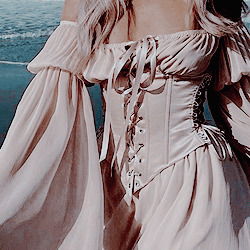




OC MOODBOARDS
ODETTE VON MÄRCHENKÖNIG
#odette von märchenkönig#oc moodboards#moodboard#mine#my edits#edits#stellaris phantasm#a new star approaches#oc appreciation
35 notes
·
View notes
Photo


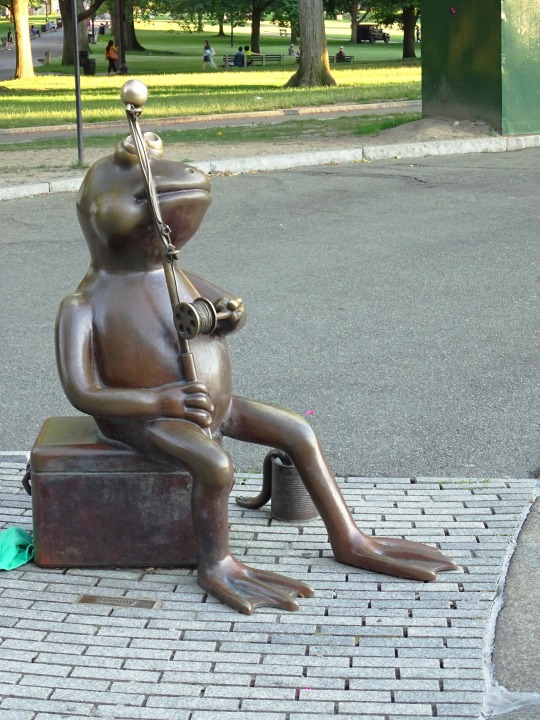
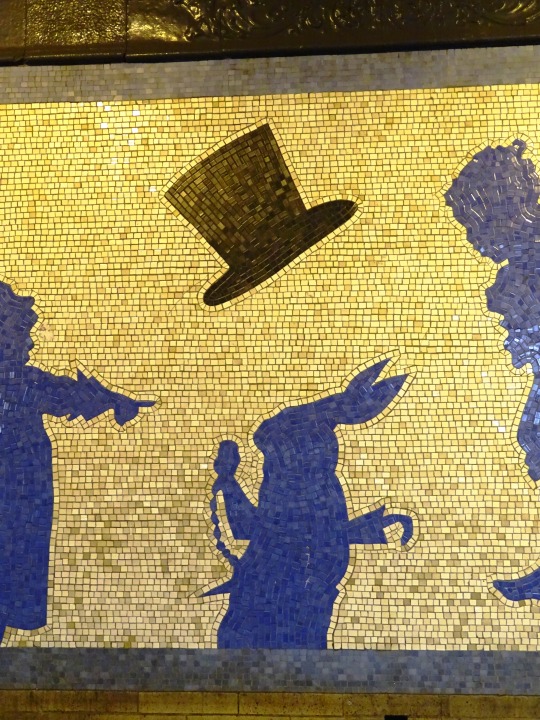




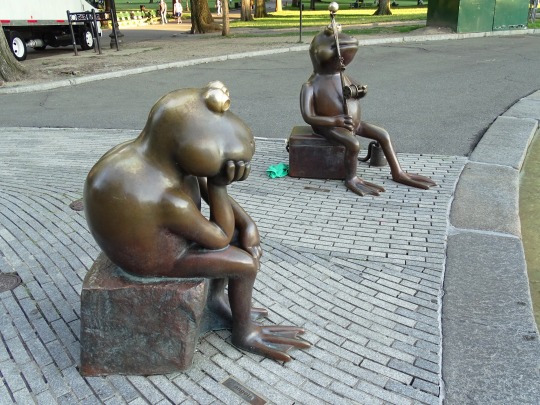
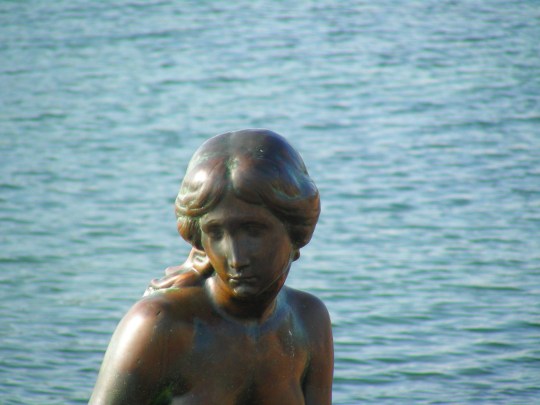
National Tell A Fairy Tale Day
Gather round the fire, and make yourselves comfortable… National Tell A Fairy Tale Day is all about exploring myths and stories, old and new. From grim(m) tales to urban legends, tap the dark corners of your subconscious and see what you find…
History of National Tell A Fairy Tale Day
The sharing of magical, otherworldly stories is a tale as old as time. While the term ‘fairy tale’ was coined in 1697 by Madame d’Aulnoy (conte de fées in her native French), it’s likely that some fairy tales originated as early as the bronze age over 6,000 years ago. And for most of history, fairy tales have been passed on not in written form but via the oral tradition, with each generation telling and dramatizing stories to the next.
The fairy tale’s ancient roots can be traced all over the world, from Vikram-Betaal in India and Aesop’s Fables in Ancient Greece to Arabian Nights in the Middle East. It was during the late 17th to 19th centuries that fairy tale collectors emerged, most famously Charles Perrault and the Brothers Grimm. While the Brothers Grimm aimed to preserve folktales in their pure form, documenting them in the way they were told by rural peasants unable to read or write, Perrault and others reworked fairy tales for literary and artistic effect, with some writers such as Hans Christian Andersen dreaming up their own new stories.
As the fairy tale’s history emerges into the modern day, it’s clear that the genre is still as popular as ever – look no further than the success of Disney movies to see how these stories continue to capture our hearts and imaginations. In fact, the famous Disney castle is inspired by Neuschwanstein Castle in Germany, built by none other than the Märchenkönig (fairy-tale king), Ludwig II of Bavaria, himself. Perched on a rocky hill and with horse-drawn carriage rides up to the front door, Neuschwanstein and its elaborate interior abound in myths and legends – the castle is even home to an artificial grotto!
By celebrating National Tell A Fairy Tale Day, you’ll be continuing the magical tradition that has ensured fairy tales are still very much part of our lives to this day.
National Tell A Fairy Tale Day Timeline
3000 BC – 1200 BC Fairy Tales get their beginning
During the Bronze Age, stories are passed down orally through Eastern and Western Indo-European languages. This includes stories such as Jack and the Beanstalk, Beauty and the Beast, as well as many others.
1697 Term “Fairy Tale” is coined
French literary fiction writer, Madame d’Aulnoy publishes her own book of Fairy Tales and is the first to use the term which, in French, is conte de fées. She is one of many female fairy tale writers during this era.
1697 Charles Perrault publishes his first book
This French author publishes a story collection that not only includes Little Red Riding Hood, but the grouping is subtitled as “Tales of Mother Goose”.
Early 19th Century Brothers Grimm popularize Fairy Tales
Jacob and Wilhelm Grimm are German academics who collect stories from German folklore and retell them. Many of these stories are similar to those of French storyteller, Charles Perrault, from a century prior.
1837 Hans Christian Andersen publishes The Little Mermaid
Included in the first collection of Fairy Tales Told for Children, which is published in Copenhagen, The Little Mermaid is probably one of the most popular of Anderson’s tales.
How fairy tales change over time
Perhaps one of the most interesting aspects of fairy tales is how they change over time. Simple plot structures, motifs and archetypal characters recurring across many cultures make these stories rife for adaptation and reinterpretation.
Although nowadays we usually associate fairy tales with children’s literature, you may be surprised to learn that many of today’s beloved stories have rather dark and disturbing origins. Imagine a world in which no woodcutter comes to save Little Red Riding Hood from the wolf’s belly, or in which one of the ugly stepsisters cuts off her own toes so that her foot fits in the slipper! From the 18th century onwards, many fairy tales were toned down and reworked so that they were more suitable for children.
These stories and the genre itself have also been adapted and reinvented for different time periods and cultures. Alongside original modern-day fairy tales, there are also various retellings, for example in urban settings or different countries. One particularly common type of retelling comes from women writers. Authors such as Angela Carter and Margaret Atwood have taken what are often seen as outdated tropes about women and reinvented them – the damsel in distress becomes the plucky heroine, and the trapped bride leaves her ogre husband for her happily ever after.
Why fairy tales are important
As it is often claimed Albert Einstein once said, “If you want your children to be intelligent, read them fairy tales. If you want them to be more intelligent, read them more fairy tales.” We might not expect such high praise for fairy tales from a world-famous theoretical physicist, but Einstein recognized the importance of the imagination. Fairy tales are incredibly valuable for both children and adults when it comes to learning about the world in which we live and developing our capacity for creativity. Fairy tales have also been considered fertile ground by psychoanalysts. With their twists and turns, age-old themes and familiar characters, our favorite stories may reveal not only the workings of our personal subconscious but also the fundamental elements of our collective psyche.
How to celebrate National Tell A Fairy Tale Day
It should be clear by now that, when it comes to celebrating National Tell A Fairy Tale Day, you really can let your imagination run wild! And while it’s a day that kids will love, it’s also a great occasion for adults too.
Gather your friends and family and take it in turns to share your favorite stories with one another. Time to brush up on your acting skills, as the more dramatic enactments the better – whether you’re good at impersonating a wicked witch or excel at acting out the characters’ quest through the enchanted forest, you’ll want to really make the tale come to life for your audience. And why not sit around a bonfire toasting marshmallows or string up some fairy lights in your living room to add to the atmosphere?
Alongside sharing the stories we know and love, fairy tales are the perfect genre for getting creative and honing your writing skills. Take a well-known story and tweak it to fit a different time or setting, or have a crack at inventing your own. It may well start with ‘Once upon a time’, but it’s completely up to you whether there’s a ‘Happily ever after’! Many libraries and literary organizations will also share stories and creative resources and even hold events to help mark the occasion.
If writing’s not your thing, then there are plenty of films and programs based on fairy tales for you to enjoy. Disney’s Snow White and the Seven Dwarves, Cinderella and The Little Mermaid are just some examples of the media giant’s adaptations, while movies and TV series such as Into the Woods and Tell Me a Story interweave and retell various classic fairy tales for new audiences.
And if you feel like going all out, why not host a fairy tale themed party? Encourage your guests to come in fancy dress, put on an enchanted feast of yummy snacks such as gingerbread houses and toadstool cupcakes, and throw some legendary party games like hunt the pea and castle building.
However you choose to celebrate National Tell A Fairy Tale Day, it’s sure to be a magical occasion!
National Tell A Fairy Tale Day FAQs
What is a Fairy Tale?
Also called wonder tales, magic tales or fairy stories, Fairy Tales are a genre of fiction originating in European folklore. These tales often feature mythical creatures such as elves, dwarves, giants, fairies, gnomes, mermaids and more.
Who wrote the first Fairy Tales?
The original stories were passed down orally for thousands of years so it’s impossible to tell who started them. However, some of the first Fairy Tales that were written and published were by French Authors Charles Perrault and Madame d’Aulnoy.
What are the most popular Fairy Tales?
A favorite part of many childhoods, some of the most popular stories of all time include Cinderella, Beauty and the Beast, Little Red Riding Hood, Snow White and the Seven Dwarves, Jack and the Beanstalk and Sleeping Beauty.
Which Fairy Tales are Grimm?
In the early 19th century, the Grimm Brothers spent time collecting stories from people of all classes in Germany. Some of their Fairy Tales include Cinderella, Snow White, Hansel and Gretel, Rapunzel, The Frog King, Rumplestiltskin and Little Red Riding Hood.
When is Tell a Fairy Tale Day?
Each year on February 26, National Tell a Fairy Tale Day is the perfect time to spend time reading and making up stories with children.
Source
#Hans Christian Andersen by Georg John Lober#Central Park#New York City#The Little Mermaid by Edvard Eriksen#Copenhagen#Denmark#travel#USA#vacation#Boston#Massachusetts#Boston Common#subway#sculpture#Frogs at Tadpole Playground by David Phillips#Alice The Way Out by Liliana Porter#Hare by Nancy Schön#National Tell A Fairy Tale Day#NationalTellAFairyTaleDay#26 February
2 notes
·
View notes
Text
Ludwig II. - Sehnsucht nach dem Paradies

Regensburg - Von oben herab sinkt der Märchenkönig in die Tiefe einer dunklen Unterwasserwelt. Unten auf der Bühne zieht in Sequenzen sein Leben noch einmal an ihm vorbei. Dramatisch und eindrucksvoll beginnt „Ludwig II. – Sehnsucht nach dem Paradies“, das seit 7.12. als Neufassung in Regensburg gezeigt wird. Das Musical von Franz Hummel inszeniert den Kampf des Königs gegen das Kabinett und für die Kunst in einer politisch angespannten Zeit.
Von Claudia Böhm
Gut zwei Stunden dauert die gestraffte Neufassung des Stücks, dessen Premiere am vergangenen Samstag für einen vollen Theatersaal sorgte. „Ludwig II.“ erzählt die Geschichte eines unverstandenen Herrschers. 2000–2003 haben mehr als 1,5 Millionen Zuschauer das Musical über die schillernde bayerische Identifikationsfigur im Theater in Füssen gesehen. Das Theater Regensburg hat anlässlich des 80. Geburtstags des Komponisten Franz Hummel eine eigene Fassung beim Jubilar und seinem Librettisten Stefan Barbarino in Auftrag gegeben.
Der Schöpfer von Schloss Neuschwanstein erlebte dessen Fertigstellung nicht

Ludwig II, gespielt von Johannes Mooser. Foto: Christina Iberl
Mit nur 19 Jahren bestieg Bayerns Märchenkönig Ludwig II. den Thron. Sein Interesse galt aber weniger der Diplomatie als den schönen Künsten. Er wurde zum großzügigen Förderer von Künstlern und Musikern, allen voran von Richard Wagner.Doch der erhoffte Dank blieb aus.
Verbittert zog er sich zurück und kümmerte sich kaum noch um die Regierungsgeschäfte. Nur in seiner Cousine Elisabeth von Österreich fand er eine Seelenverwandte, die zu ihm hielt. Doch auch ihr gelang es nicht, den obsessiven Träumer davor zu bewahren, an der Wirklichkeit zu zerbrechen. Er verlobte sich mit Sissis Schwester Sophie, beauftragte riesige Bauten.
Seine visionären Traumschlösser verschlangen Unsummen. Aufgrund seiner angeblichen „Verschwendungssucht“ wurde er für geisteskrank erklärt und entmachtet. Bis heute ranken sich Legenden um Leben und Tod des bayerischen Märchenkönigs.
Ludwig-Darsteller Johannes Mooser brillierte bei der Premiere
Ein „ewiges Rätsel“ wird der tragische Herrscher der Welt bleiben. Ebenso rätselhaft blieb dem Premierenpublikum aber auch, was an dem Stück nun genau ein „Musical“ war. Unter populärem Musiktheater dürfte sich manch einer anderes vorgestellt haben.
Abgesehen von den nicht ganz so eingängigen Komposititionen – technisch traf das Städtische Orchester unter Leitung von Generalmusikdirektor Chin-Chao Lin jeden (unharmonischen) Ton.
Johannes Mooser in der königlichen Hauptrolle und Vera Semieniuk als Sophie,
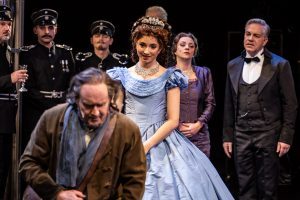
Foto: Christina Iberl
Prinzessin von Bayern, sangen und spielten herausragend. Letztere amüsierte mit gezielt falsch intoniertem Offenbach. Einen humoristischen Akzent setzten auch die vier Kabinettsmitglieder und – ungewollt amüsant – der Versuch einiger Darsteller, in bayerischer Mundart zu singen.
Insgesamt macht das perfekte Bühnenbild und die tolle Lichtinszenierung aus dem Stück zwei Stunden gute Unterhaltung. Für Königstreue Theaterfreunde ein Stück vom Paradies.
Bis Juni 2020 auf der Bühne am Bismarckplatz
Weitere Aufführungen: 10, 13. 16. Dezember, 12. ,18., 29. Januar. Mehr Infos, weitere Termine und Karten unter www.theater-regensburg.de.

Sara Maria Saalmann (Sissi, Kaiserin von Österreich), Arpad Vulkan (Kaiser Franz Joseph von Österreich), Opernchor. Foto: Christina Iberl
Lesen Sie den ganzen Artikel
#Chin-ChaoLin#FranzHummel#Füssen#JohannesMooser#LudwigII#Märchenkönig#Musical#RichardWagner#theaterambismarckplatz#TheaterRegensburg
0 notes
Text
The Waste Land
Entry for the Band of Brothers appreciation week over at @hbowardaily.
Day 1 - One location/scenery

Everything around here looked like it came straight out of a fairytale. All picturesque houses, snow capped mountains and green fields as far as the eye could see. It was so quiet and peaceful here that it was almost difficult to imagine that there was even a war going on, because it seemed to have missed this section of Germany entirely. The forests that they passed through were quiet and the lakes were so blue that they looked like they had come straight from a postcard. It just didn’t seem real at times.
Some of the guys that came from more rural or mountainous parts of the States might have been more used to views like this, but it was all new to several of the city boys.
But no one could have been prepared for the sight that greeted them at one point during their journey.
It was almost as if someone had taken a castle, plucked it straight from someone’s dreams and had just dropped it right there. The building dominated the landscape, it’s white spires seemingly emerging from the trees. It couldn’t have been put in a better place, surrounded by green forests and flanked by mountains. The urge to ask the drivers to stop so they could go and have a closer look was great, because if the building looked this impressive from this distance, imagine what it must look like up close. Not to think of what it must look like inside.
“Neuschwanstein.”
“What did you just say to me?”
“Neuschwanstein,” Webster replied calmly. Liebgott was defensive about almost everything, but he had somehow learned to navigate his way through it. “The castle.”
“How the fuck did you know about that?”
“Found some books in the last town that we were in and I read about it,” Webster said with a shrug. “One of them was a book about Bavarian history.”
“Any pictures in it?”
“Not a lot.” Liebgott had already lost interest at that point and turned his head to look back at the large castle. “It was built for the king of Bavaria. Ludwig II. He drowned in a lake near Munich. T.S. Eliot mentioned the lake in a poem.”
“Well thank you for the history lesson, Web.”
The sarcasm that was dripping from Liebgott’s voice was obvious to everyone that had heard him. Webster shook his head and turned his attention back to his book, paying him no mind. He’d gotten oddly used to it by now and took it all in his stride.
“What poem?” Pulling his attention from the book in his hands, he looked at the man on the other side of him. When he looked confused, Christenson repeated his question. “What poem?”
“Oh. The Waste Land.” Webster thought that he was only being nice, but Christenson seemed genuinely interested. “You want me to…?”
“Only if you know it.”
Webster wasn’t used to the guys wanting to listen to him when he mentioned anything that was even remotely related to literature, at times the looks that he got made him feel like he had just uttered the worst swear words known to man, but for once someone seemed genuinely interested.
“Summer surprised us, coming over the Starnbergersee
With a shower of rain; we stopped in the colonnade,
And went on in sunlight, into the Hofgarten,
And drank coffee, and talked for an hour.”
“Huh.” Christenson looked up at the castle and then back at Webster. “Think we’ll travel past it?”
“What?”
“The lake you just mentioned. Starn… what was it?”
“Starnbergersee. Maybe?” Webster didn’t really know where they were headed now to be honest. “We might if we come past by Munich.”
“If it looks like any of the other lakes round here, it’ll probably be beautiful.”
“Probably. They thought he was mad you know.”
“Who?” Christenson actually sounded intrigued now. “The King?”
“Yeah. Called him der Märchenkönig. The Fairy Tale King.” There was a fair bit of information on him in the book that he’d taken with him. Webster had only read parts of it, but he thought that the man sounded quite interesting. “Built a couple of grand palaces, but since he ran out of money a couple of them are unfinished.”
“Like that one?” Christenson pointed up at the castle which was barely visible now, only occasionally coming back into view through some of the trees. “Doesn’t look unfinished to me.”
“No telling what it looks like from the inside. Could be nothing but bare walls for all we know.” Webster laughed, because that sure would be something. Beautiful facade and then empty on the inside. “I’ll read more of that book and then I’ll get back to you.”
“Sure thing. I kinda want to know now.”
Webster was still somewhat bewildered that Christenson had even expressed an interest in this, but if he wanted to know the details, then he would find out for him. Since the conversation had ended, Webster turned his attention back to his book and smiled to himself as the castle disappeared from view.
#band of brothers#bobweek#hbowardaily#david webster#joe liebgott#pat christenson#schloss neuschwanstein#breaking up my wandavision reblog flow by posting this#my fic
26 notes
·
View notes
Text

Of which area was 'Mad King' Ludwig II, a monarch in the 19th century?
Ludwig II (1845-1886) was the king of Bavaria (now part of Germany) from 1864 until shortly before his death. He was often referred to as 'Mad King Ludwig' because, some of his behaviour seemed very strange. For instance, he exited his castle by climbing out of the window instead of using the door.
As well as 'Mad', Ludwig was sometimes referred to as the 'Swan King' or 'Der Märchenkönig' (the Fairytale King). During his reign, he built several fairytale-like castles, the most famous being Neuschwanstein (New Swan Stone Castle) in South Bavaria.
Tourists from all over the world continue to visit Ludwig II's castles. They also admire the Bayreuth Festspielhaus (Bayreuth Festival Theatre), which the king built for Richard Wagner (1813-1883), a composer he particularly admired. The theatre is devoted to only playing Wagner's operas.
During his reign, Ludwig increasingly withdrew from official affairs in preference of his extravagant architectural projects. He spent and borrowed a lot money, despite the advice of his ministers. His spending was used against him by the government to declare him insane. On 10th June 1886, they deposed the king and placed him in custody, later transferring him to Berg Castle on the shores of Lake Starnberg.
On 13th June 1886, the bodies of Ludwig II and his doctor were found in the lake. Whilst the autopsy report suggests murder, the official report claims it was suicide.
2 notes
·
View notes
Photo













Una nueva entrega de personajes históricos por el humoristas gráfico Don Julio: Luis II de Baviera, conocido con el nombre de el Rey Cisne o der Märchenkönig ('el Rey de los Cuentos de Hadas') (25/10/2021)
2 notes
·
View notes